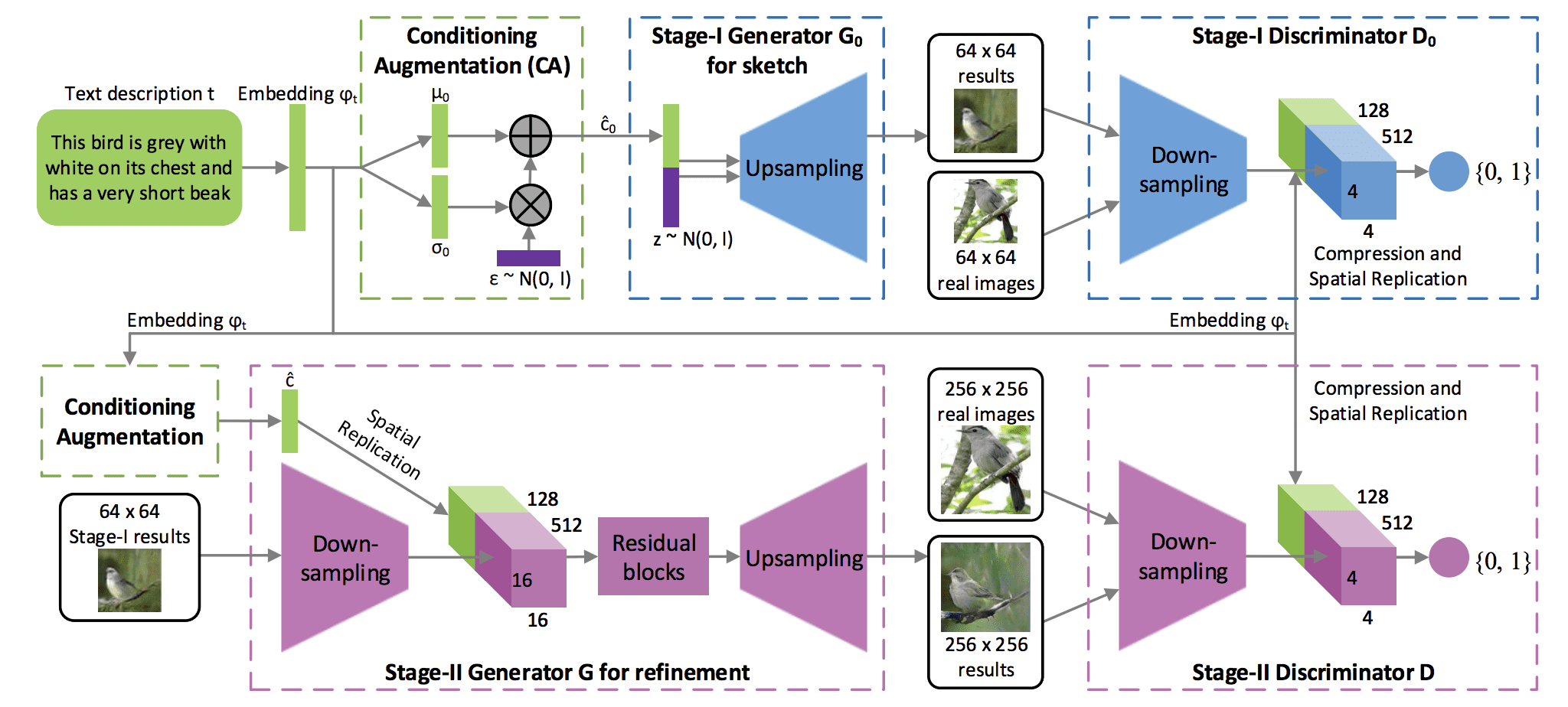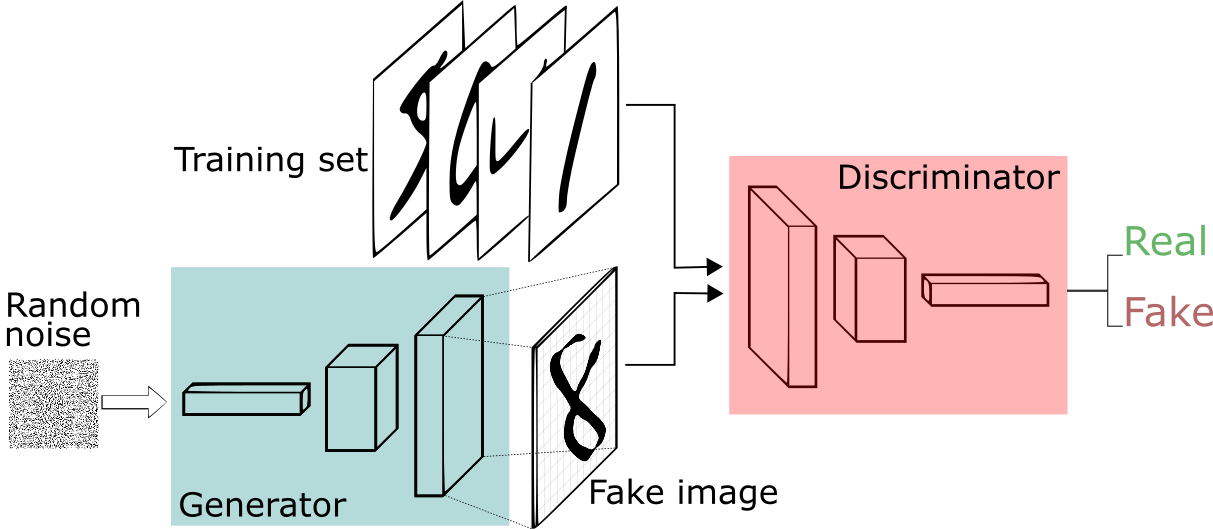
Introduction:
Generative Adversarial Networks (GANs) have emerged as a revolutionary force in the realm of artificial intelligence, particularly in the field of image generation and data augmentation. Developed by Ian Goodfellow and his colleagues in 2014, GANs have evolved from being a novel concept to a transformative technology with widespread applications across diverse industries. In this blog, we will explore the remarkable impact of GANs in various sectors, showcasing how these powerful models are revolutionizing image generation, data augmentation, and more.
Understanding GANs:
What are Generative Adversarial Networks (GANs)?
Generative Adversarial Networks (GANs) are a class of machine learning models that belong to the broader category of generative models. GANs consist of two neural networks, a generator, and a discriminator, which are trained simultaneously through adversarial training. The generator creates synthetic data, while the discriminator evaluates whether the generated data is real or fake. This dynamic interplay leads to the creation of increasingly realistic and high-quality synthetic data.
Core Components of GANs:
- Generator: The generator in a GAN is responsible for creating synthetic data. It takes random noise as input and transforms it into data that ideally cannot be distinguished from real data.
- Discriminator: The discriminator, on the other hand, evaluates data and attempts to distinguish between real and synthetic samples. Through adversarial training, the discriminator becomes increasingly adept at making accurate distinctions.
The GAN Training Process:
The training process involves a continuous loop where the generator and discriminator are in constant competition. The generator strives to create data that is indistinguishable from real data, while the discriminator aims to improve its ability to differentiate between real and synthetic samples.
Applications and Use Cases of GANs Across Industries:
1. Image Generation and Synthesis:
a. Fashion Industry:
GANs are widely employed in the fashion industry for generating synthetic images of clothing items. This includes designing new patterns, textures, and styles, providing designers with a wealth of creative possibilities and reducing the need for extensive photoshoots.
b. Art and Design:
GANs have been embraced by artists and designers to create unique pieces of digital art. These models can generate novel, visually stunning images, pushing the boundaries of creativity and expression.
c. Virtual Try-Ons:
In the e-commerce sector, GANs enable virtual try-ons, allowing customers to visualize how clothing items would look on them without physically trying them on. This enhances the online shopping experience and reduces the rate of product returns.
2. Data Augmentation:

a. Healthcare Imaging:
GANs play a crucial role in augmenting medical imaging datasets. These models generate synthetic images with variations, helping improve the robustness of machine learning algorithms in tasks like disease diagnosis and medical image analysis.
b. Autonomous Vehicles:
GANs are employed to augment datasets for training computer vision models used in autonomous vehicles. Synthetic images generated by GANs introduce diverse scenarios, such as different weather conditions and traffic situations, enhancing the model’s ability to generalize to real-world environments.
c. Natural Language Processing (NLP):
GANs are utilized to augment datasets in NLP tasks, such as text-to-speech synthesis. By generating diverse samples, GANs contribute to building more robust and versatile language models.
3. Image-to-Image Translation:
a. Satellite Image Enhancement:
GANs are applied to enhance satellite imagery, improving the resolution and quality of images. This has applications in urban planning, environmental monitoring, and disaster response.
b. Facial Aging and Deaging:
GANs are used to simulate the aging or deaging of faces in images. This has applications in entertainment, forensic science, and the beauty industry.
c. Style Transfer:
GANs enable the transfer of artistic styles between images, allowing for the creation of visually appealing and unique compositions. This has applications in photography, design, and content creation.
4. Anomaly Detection:
a. Cybersecurity:
GANs are employed for anomaly detection in network traffic. By learning the normal patterns of network behavior, GANs can identify and flag unusual or suspicious activities, aiding in cybersecurity efforts.
b. Manufacturing Quality Control:
GANs contribute to quality control processes in manufacturing by detecting anomalies in production lines. These models can identify defective products or deviations from standard manufacturing processes.
c. Fraud Detection in Finance:
GANs are utilized to detect fraudulent activities in financial transactions. By learning patterns of normal behavior, these models can identify anomalies that may indicate potential fraud, enhancing security in the financial sector.
Challenges and Considerations:
1. Mode Collapse:
GANs may face the challenge of mode collapse, where the generator produces limited types of samples, reducing diversity in the generated data. Addressing mode collapse involves refining the training process and architecture.
2. Training Instability:
GAN training can be inherently unstable, leading to issues such as vanishing gradients or difficulties in converging to an optimal solution. Techniques like modifying loss functions and employing advanced training strategies are applied to stabilize GAN training.
3. Ethical Considerations:
The generation of synthetic data raises ethical concerns, especially when it comes to deepfakes and the potential misuse of GAN-generated content. Addressing ethical considerations involves establishing guidelines and regulations to prevent malicious applications.
4. Computational Resources:
Training GANs, especially large-scale models, requires significant computational resources. As a result, accessibility to advanced computing infrastructure becomes a limiting factor for some researchers and organizations.
Future Outlook:

1. Advanced Architectures:
The development of more advanced GAN architectures, such as StyleGAN and BigGAN, continues to push the boundaries of what is achievable in terms of image generation quality and diversity.
2. Interdisciplinary Collaborations:
GANs are increasingly becoming a tool for interdisciplinary collaboration, with researchers, artists, and industry professionals working together to explore novel applications and creative possibilities.
3. Ethical Guidelines and Regulations:
As GANs become more prevalent, the establishment of ethical guidelines and regulations will play a crucial role in mitigating potential misuse. Governments, industry bodies, and research institutions are expected to contribute to shaping responsible practices in GAN application.
4. Generative Models Beyond GANs:
While GANs have been highly successful, the field of generative models continues to evolve. Variational Autoencoders (VAEs), for instance, offer a different approach to generating diverse and high-quality samples.
Conclusion:
Generative Adversarial Networks (GANs) have transcended their initial role as a groundbreaking concept and have firmly established themselves as transformative tools across various industries. From revolutionizing image generation to enhancing data augmentation and enabling novel applications, GANs are reshaping the landscape of artificial intelligence. As researchers and practitioners continue to unlock the full potential of GANs, the impact on creativity, innovation, and problem-solving is poised to deepen, marking a new era where synthetic intelligence seamlessly integrates with human endeavors. The journey of GANs is not just a technological progression; it is a narrative of how cutting-edge research converges with real-world applications to redefine what is possible in the realms of image synthesis, data augmentation, and beyond.
